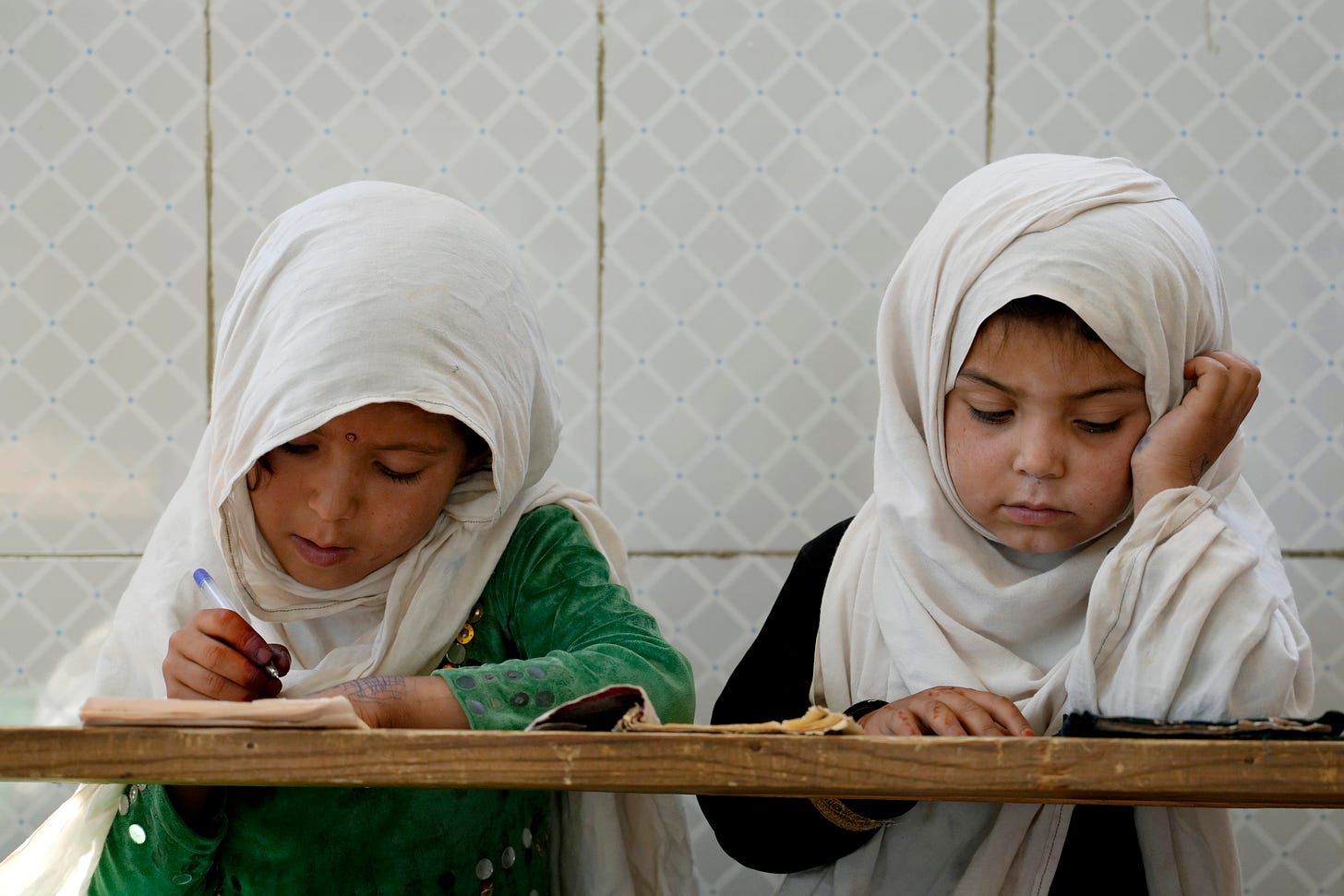Original link: https://sehseh.substack.com/p/46
46% – adult female literacy rate in low-income countries
On August 15, 2022, the first anniversary of the Afghan Theologian (Taliban) coming to power, women’s right to education is greatly restricted. (AP)
?Official website easy to read version|Today’s figure: 46%??
Editor’s note: “Digital Monday” is a new column of Evening News launched by World Walk, written by special author Xie Dawen. What is the knowledge behind the fleeting figures in international news? Let the author talk about it.
Good night,
October 11 marks the tenth anniversary of the United Nations’ International Day of the Girl Child. One of the purposes of this day is to remind the public to pay attention to the issue of women’s education.
According to data from the World Bank, in low-income countries around the world, the literacy rate of adult males is about 70%, while the literacy rate of adult females is 54%, that is, the illiterate rate is as high as 46% . The World Bank divides countries into four categories: low-income, lower-middle-income, upper-middle-income, and high-income. According to the 2020 definition, a per capita gross national income (GNI) below US$1,035 is considered a “low-income country”. The number for this definition varies slightly from year to year.
Adult literacy rates are cumulative over time. In low-income countries, educational resources are already relatively scarce, and women are excluded from the education system for various reasons, or given priority to be sacrificed when resources are insufficient, resulting in a higher literacy rate among adult women than men.
Gender inequality is particularly pronounced in low-income countries at the secondary level: for every 100 boys, there are only 81 girls; 20 years ago, there were only 67 girls for every 100 boys. This shows that in poor countries, women are still more likely than men to drop out or not progress.
Why is this happening? In addition to under-resourced women’s education being sacrificed first, some subtler gender biases also play a role.
Studies have pointed out that in Malawi, as soon as female students begin to develop intimate relationships, adults will be considered unwilling to resist the temptation to learn, and some parents will even refuse to pay school fees for their daughters – despite the statistics of girls who fall in love. It’s not really easier to skip classes, and grades aren’t necessarily lower. Regardless of whether the relationship affects their academic performance, teachers will “pre-punish” these female students who fall in love because of gender bias, and impose punishments such as suspension of classes, which indirectly makes them more likely to repeat grades or be forced to drop out of school.
Still, there is good news: Even in low-income countries, the latest generation of school-age girls has seen marked improvements in education. Fifty years ago, there were only 64 female students for every 100 male students in primary schools in low-income countries; 20 years ago, there were 80 female students for every 100 male students; now, it is 100 male students. 92 female students, the gap has narrowed a lot.
The progress of the new generation is also reflected in the literacy rate of young people: in low-income countries, the literacy rate of young men between the ages of 15 and 24 is 76%, and the literacy rate of women is slightly lower at 71%, indicating that the education status of women has improved significantly.
I’ve always believed that numbers don’t have to be cold-hearted. When we ask important questions and tell stories with numbers, they can help us understand the context of one thing: How much impact does a dilemma have? To what extent has the possibility of a breakthrough been realized?
This is “Digital Monday”, I hope you like it. (Finish)
About the author | Xie Dawen (PhD candidate of the Institute of Social Sciences, National Taiwan University, likes complex history, clean data, beautiful people.)
major announcement
In order to improve the reading experience of readers, “World Walk” will adjust the publication frequency and content of the e-newsletter from 10/31. If you have any suggestions/encouragements/criticisms, please reply to us and tell us✉️
In addition, the telegram channel of walking around the world is about to officially open! Join now, don’t miss the original good articles and the latest news, the chat group exclusive to members will also announce more information in the near future, please lock your mailbox!
The World Walk has important stories you haven’t read yet. We focus on global issues from a gender perspective, complementing stories of dilemma, breakthrough, connection, and change that traditional power perspectives ignore.
Please pay a subscription to become our partner and walk with women around the world.
This article is reprinted from: https://sehseh.substack.com/p/46
This site is for inclusion only, and the copyright belongs to the original author.
